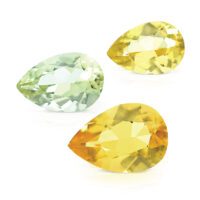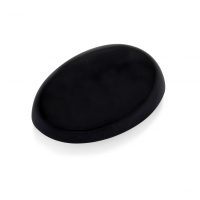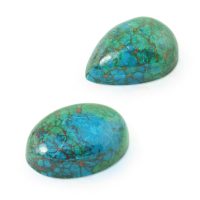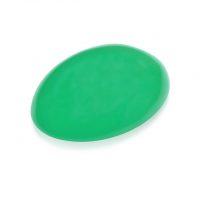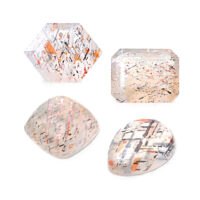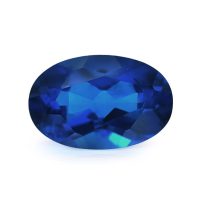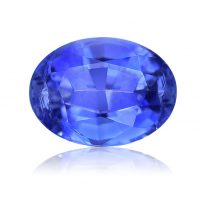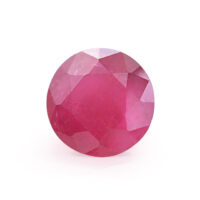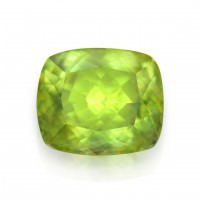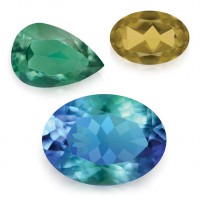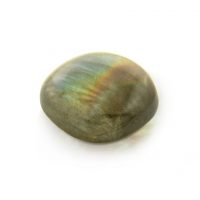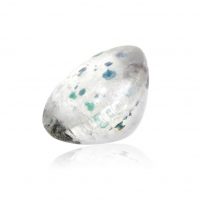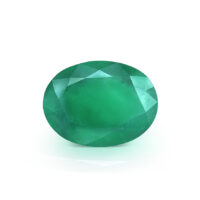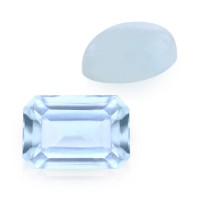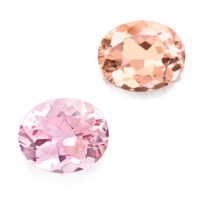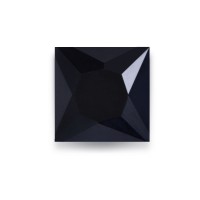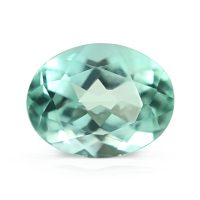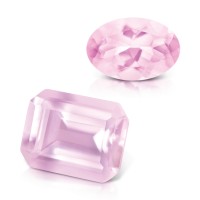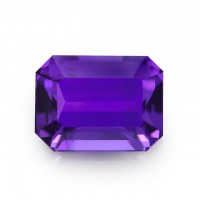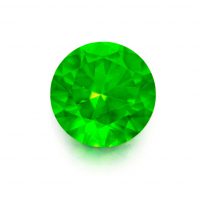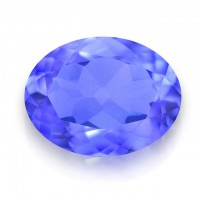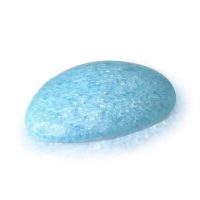

Antsirabé Labradorite is a rare gemstone with beautiful metallic blue or golden sheens. Highly coveted, Antsirabé Labradorite is from Madagascar, a premiere source for fine quality Labradorite.
Hardness 6 - 6.5
Refractive Index 1.559 - 1.570
Relative Density 2.65 - 2.75
Enhancement Stabilized (Colorless Resin)
Beauty
Labradorite is available as transparent gemstones (usually colorless, orange, red, or yellow) as well as opaque to slightly translucent smoke gray varieties that show a beautiful metallic colored iridescence or schiller, aptly called ‘labradorescence’.
Labradorescence is the colorful ‘play of light’ caused by the gem’s structure (i.e. lattice distortions) breaking up light into its spectral colors. When Labradorite crystalizes at high temperatures their chemical structures are compatible and form layers. However, when the mixture begins to cool, the chemicals become incompatible, separating and creating varying crystal layers of different depths. When light enters Labradorite it becomes trapped in these layers, reflecting from one to the next. The thickness of these layers and the speed of the light determine the colors observed. Appearing as colored reflections along its cleavage plains as light strikes the gem from different angles, labradorescence is normally blue, but it can also be golden, green, purple or red. Some examples can even display the complete color spectrum (e.g. Spectrolite).
Labradorite’s major value determinants are the beauty, strength and intensity of the colors displayed as well as cutting quality. Named for its locale, Antsirabé Labradorite’s key quality considerations are the brilliance and conspicuousness of its attractive metallic blue or golden labradorescence as well as optimal lapidary. Antsirabé Labradorite is cut as cabochons (cut in convex form and highly polished, but not faceted) with an excellent finish, proportion and shape. In contrast, transparent Labradorite is typically faceted and should be fine, clear with an eye-clean clarity, the highest quality clarity grade for colored gemstones.
Colloquial names for Labradorite include ‘black rainbow’ and ‘firestone’ (the name used by the Native Americans of Labrador who believed the gem possessed mystical and medicinal qualities). According to a Native American legend, the Northern Lights (Aurora Borealis) were once trapped in the rocks along the coast of Labrador until a travelling warrior freed most of them with a mighty blow of his spear. However, some of the lights remained trapped within the stones, resulting in the gemstone we call Labradorite.
Spectrolite is a variety of Labradorite differentiated by the range, richness and number of colors displayed by its labradorescence. Coined Spectrolite due to its ability to break light into the complete color spectrum, the name was originally used for Labradorite from south-east Finland, but is today applied to comparable gemstones from any country.
Labradorite is named after Canada’s Labrador Peninsula where it was first discovered. First encountered on the Isle of Saint Paul in 1770 by travelling Moravian missionaries, it took until 1777 for Labradorite to be described by the British Museum. A member of the plagioclase Feldspar group, Labradorite is closely related to Moonstone and Sunstone. Feldspar (derived from the German ‘feldt spat’, meaning ‘field stone’ because of its ability to enrich the soil with plant nutrients) is a mineral family especially known for gems with beautiful optical phenomenon, such as adularescence, aventurescence and iridescence. Its two subgroups are the plagioclase group and the potassium group. Distinguished by their calcium and sodium content and ratio, the plagioclase group includes most gem varieties. Gems in the potassium group share the same chemical composition, but are distinguished by their crystal structure. As many Feldspar gems look alike, some are often confused due to their similar compositions and trade names.
Rarity
Labradorite is an exotic gemstone whose prices vary widely according to availability and quality. Always scarce, especially in its fine qualities, Labradorite is one of the most coveted varieties of Feldspar. While Labradorite occurs in Australia, Canada, China, Finland, India, Mexico, Norway, Romania, Russia, Tanzania, and the US, Madagascar is the world’s premiere source for high-quality Labradorite. First reported in 2007, Antsirabé Labradorite comes from Soamiakatra in the Antsirabé District of Madagascar’s Antananarivo Province.
Durability & Care
A relatively durable jewelry gemstone, Antsirabé Labradorite (Mohs’ Hardness: 6 – 6.5) should always be stored carefully to avoid scuffs and scratches. Clean with gentle soap and lukewarm water, scrubbing behind the gem with a very soft toothbrush as necessary. After cleaning, pat dry with a soft towel or chamois cloth.
Map Location

Click map to enlarge






